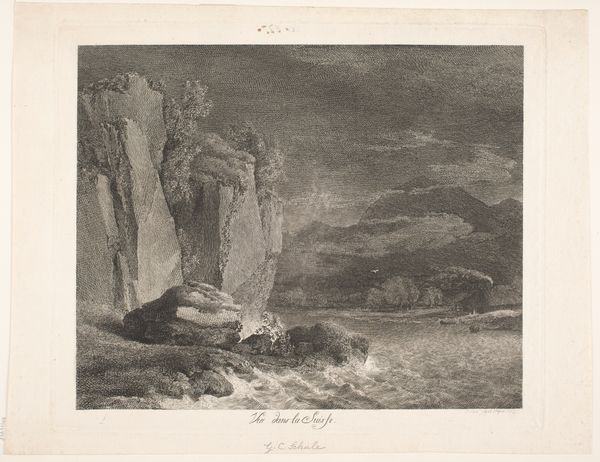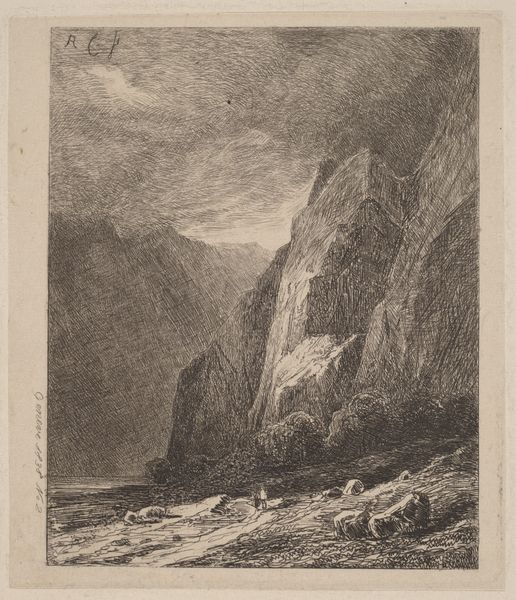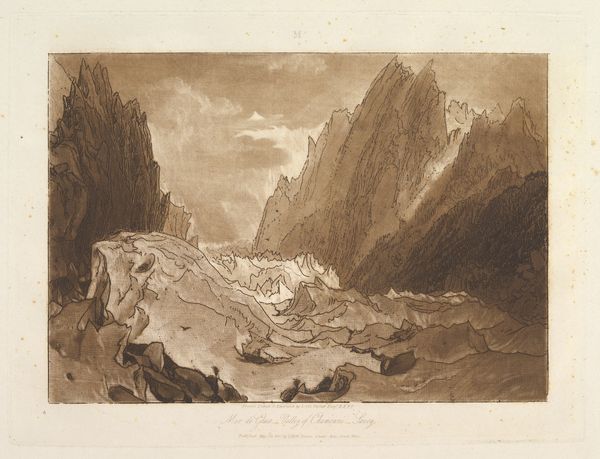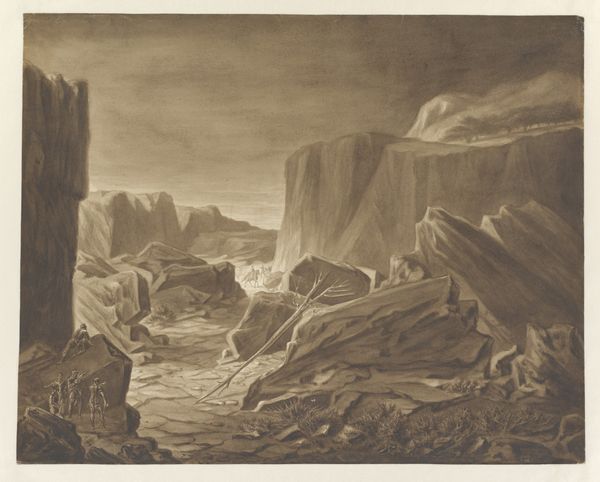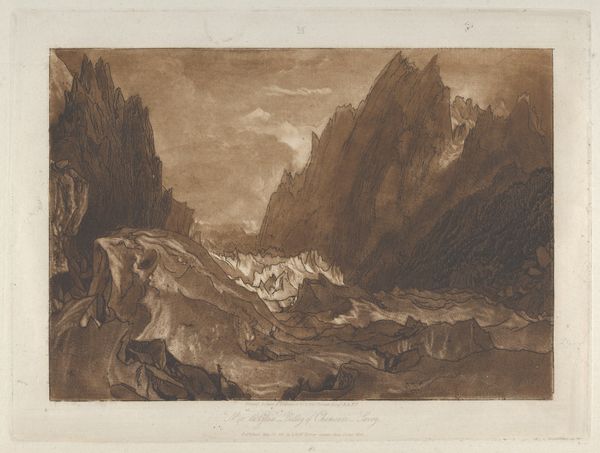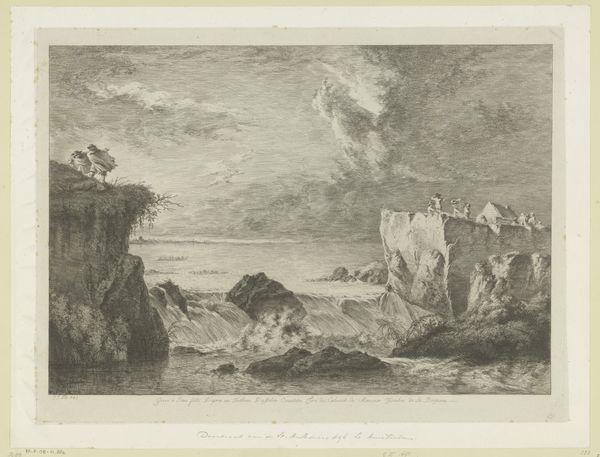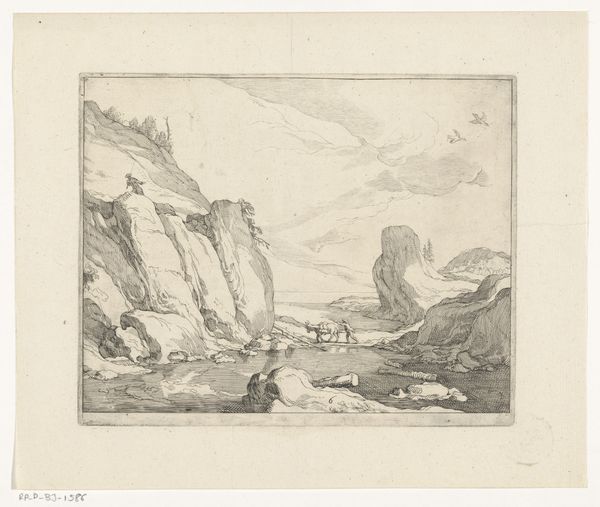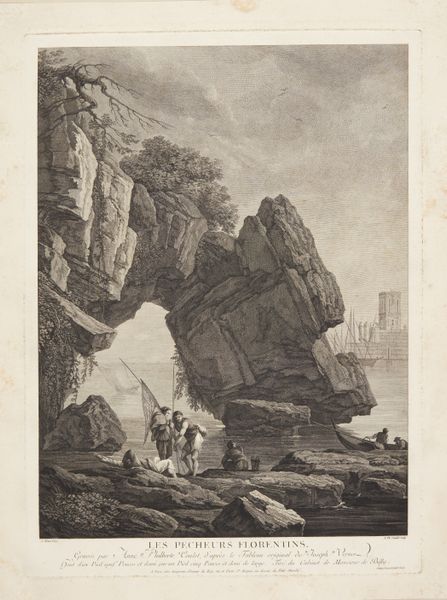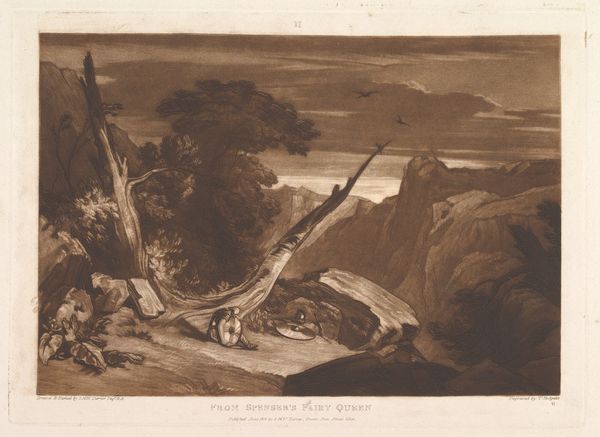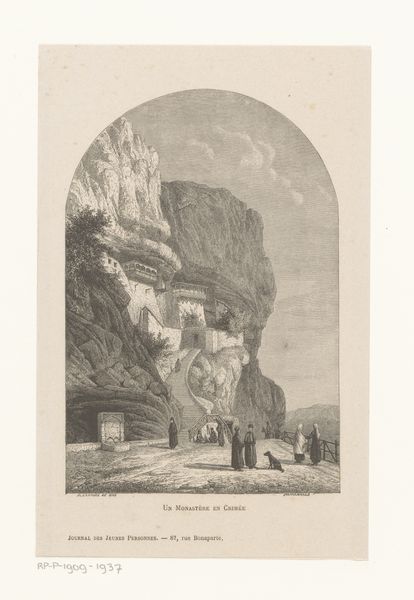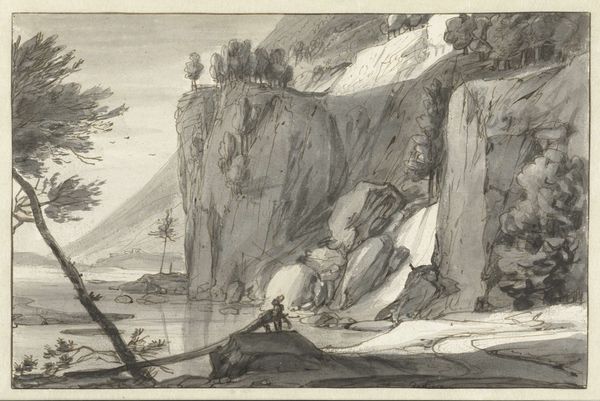
Dimensions: 262 mm (height) x 308 mm (width) (bladmaal)
Curator: Here we have Georg Christian Schule's "Vue dans la Suisse" created in 1783. It is a detailed print that seems to employ pencil techniques, showcasing a Swiss landscape. Editor: It evokes such a specific feeling, doesn't it? Somber, even. The darkness of the sky, juxtaposed with the ruggedness of the cliff face, creates a dramatic tension. You immediately wonder about the small human figures down by the water, near the shoreline. Curator: Precisely. Switzerland during this period was a popular subject for Romantic artists, aligning with the growing interest in untamed nature and its sublimity. Think about how the burgeoning tourism industry intersected with artistic production at this time; artists like Schule found a ready market for scenes celebrating Switzerland’s natural grandeur. Editor: And grandeur that’s undeniably imbued with the power dynamics of the period. Switzerland itself held complex symbolism – neutrality, but also isolation. Showing figures so small in comparison to these looming cliffs really underscores the limited agency of individuals. Whose story isn’t being told here? What about local perspectives, indigenous relationships to the land, or the reality of life outside these picturesque moments? Curator: These are crucial considerations. Schule was working within the aesthetic conventions of his era, catering to certain tastes and expectations about what constituted a compelling landscape. His piece demonstrates the romanticization of nature that elides issues like resource extraction, environmental impact, or local narratives. Editor: The detailed linework actually enhances that feeling. It romanticizes nature in a way that, even for our contemporary gaze, is beautiful, but it is also incomplete, glossing over difficult truths about humanity's fraught interaction with the natural world. Is this an imagined view more than a captured landscape? Curator: An excellent point. Schule may never have witnessed the exact scene firsthand. He very well might be composing it based on other sources, conforming it to existing pictorial expectations. The intention was not documentary, but expressive. The image has been crafted in such a way to evoke this precise mood. Editor: "Vue dans la Suisse" does effectively tap into that longing for unspoiled wilderness and the exploration of humanity’s place within a powerful world. It shows how artists catered to certain audiences through depictions of idealized natural grandeur that could elide more complex sociopolitical histories. Curator: And yet the very appeal of that aesthetic makes it worthy of analysis. Understanding what people found valuable – and what was obscured in that valuing – reveals so much about the history of art, tourism, and image-making. Editor: Indeed. As striking as it is, recognizing what “Vue dans la Suisse” leaves out allows us to engage with it on a much richer and critical level.
Comments
No comments
Be the first to comment and join the conversation on the ultimate creative platform.
